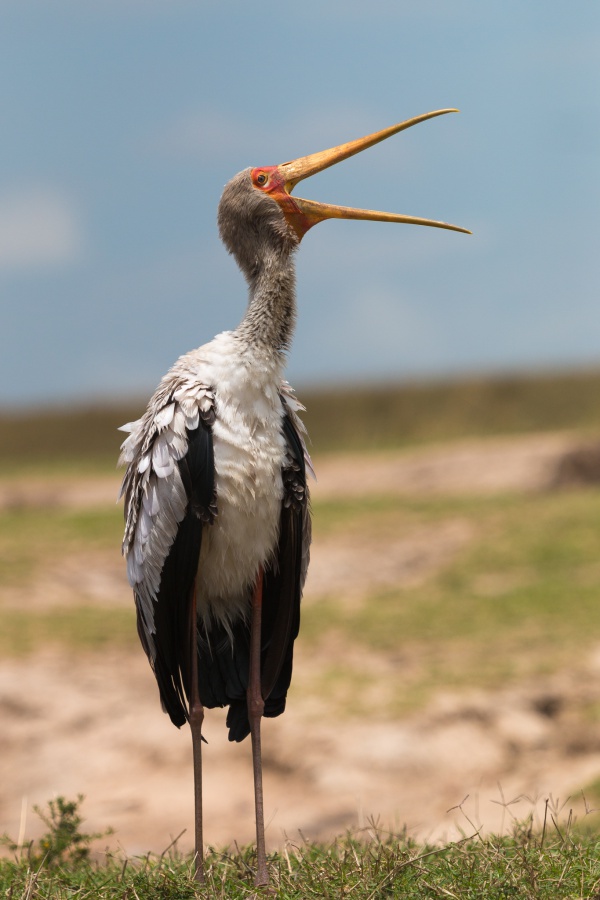Facts About Yellow-billed stork
The yellow-billed stork, often mistakenly referred to as the wood stork or wood ibis, is a striking bird native to Africa, south of the Sahara, and Madagascar. It belongs to the Mycteria genus, which also includes other noteworthy storks such as the American wood stork, milky stork, and painted stork. This medium-sized bird boasts a distinctive white body, a yellow bill, and red facial skin. During the breeding season, its plumage becomes even more vibrant.
In terms of diet, the yellow-billed stork is not particularly selective. It primarily consumes small fish, crustaceans, insects, and occasionally small mammals and birds. It employs a unique hunting strategy, relying on touch to capture its prey and utilizing a quick snapping reflex and a foot-stirring technique to locate food.
Breeding for these storks is closely tied to the rainy season. The heavy rains and subsequent flooding increase the availability of food, creating ideal conditions for raising chicks. Their courtship involves a variety of displays and mating rituals, after which they build nests, lay eggs, and share incubation duties.
These storks prefer to breed in colonies, with young storks quickly imitating adult behaviors. Although they face threats from poaching, habitat destruction, and predators like cheetahs, leopards, and fish eagles, their population remains stable. Consequently, the yellow-billed stork is classified as Least Concern. Their wide range, large population, and successful breeding habits all contribute to their steady conservation status.

 Botswana
Botswana